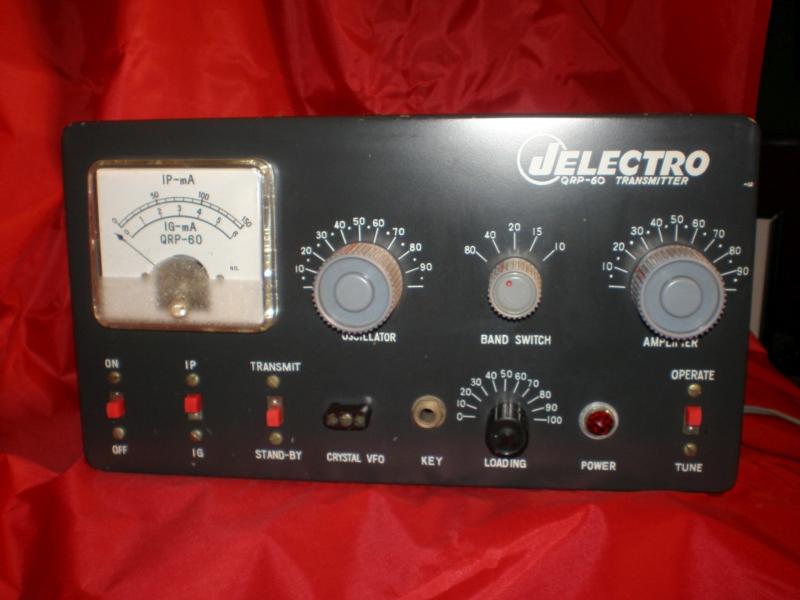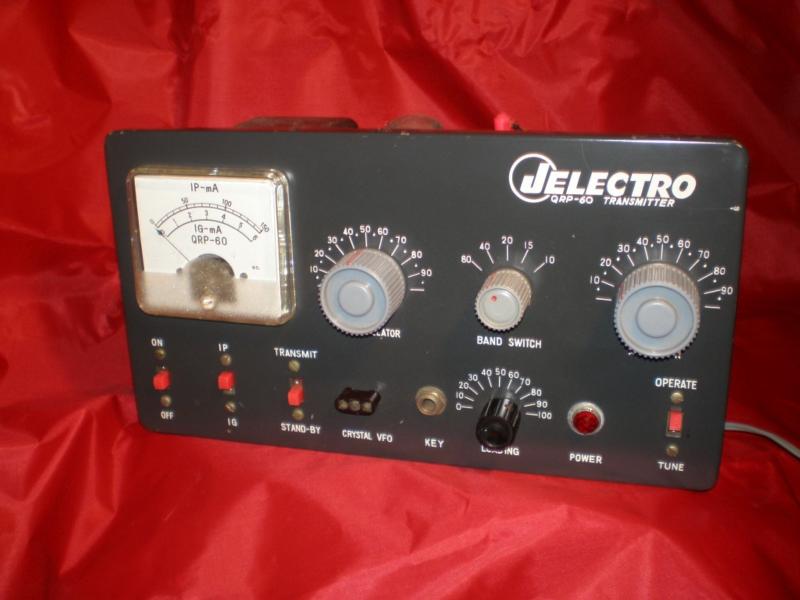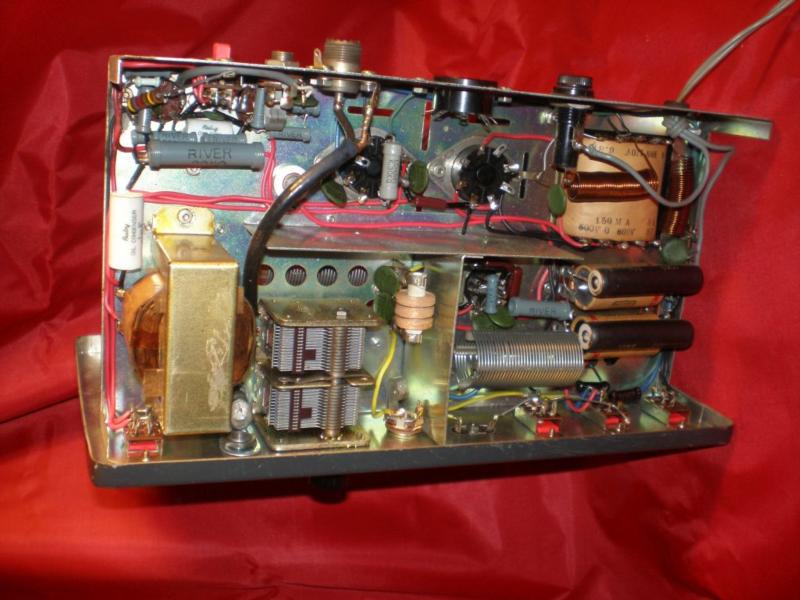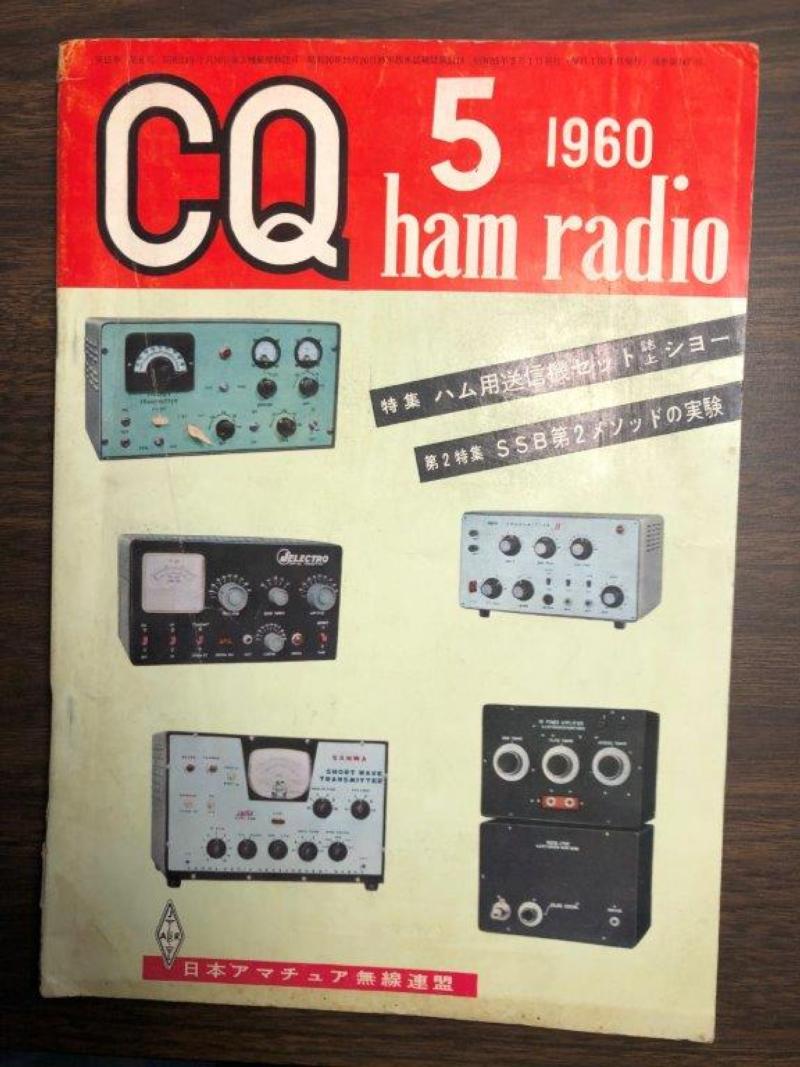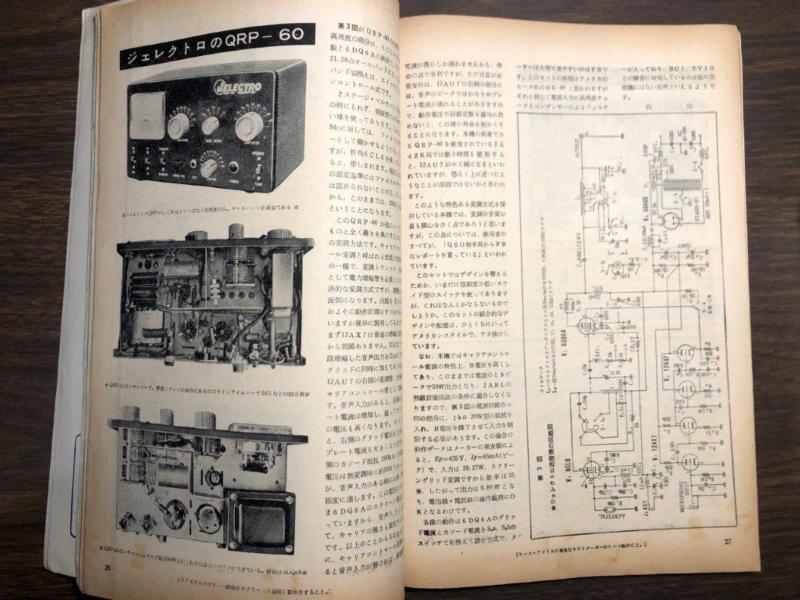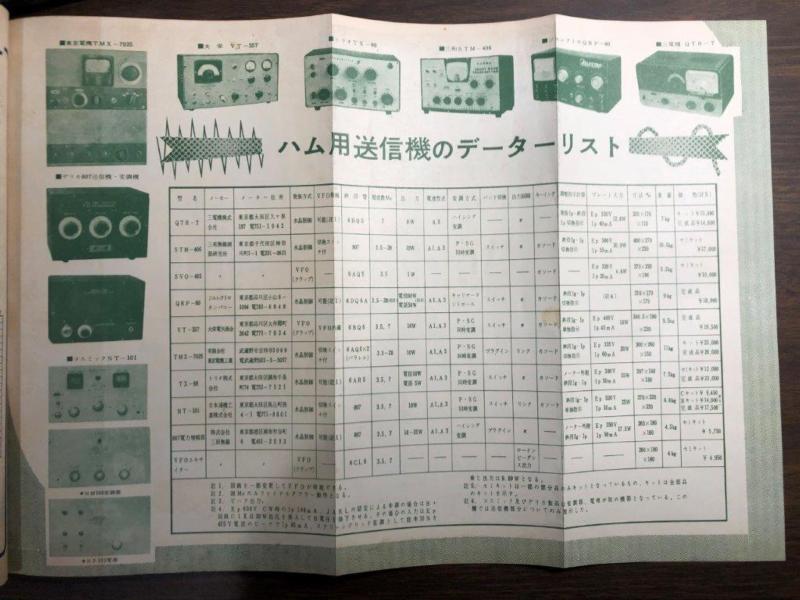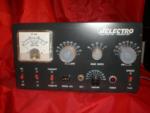
Posted By: Robert Nickels (ranickels) Posted: 03/24/2021 Vintage Ham Radio 03/24/2021 |
The Jelectro QRO 60 |
|
After the conclusion of World War II, there were only about 300 radio amateurs in Japan. In the year 1952, the JARL reported that only 30 provisional licenses were granted. Realizing the value of ham radio in developing a technological workforce, Japan introduced its entry level Class 4 licence in 1959 - it would prove to be the world's most successful category of amateur radio license with over 3 million licensees. In the beginning Class 4 license holders were permitted 10 watts output on the 1.9, 3.5, 7, 21, 24, 28 MHz bands but with both phone and CW privileges. This stimulated an expansion of the number of licensed hams to over 2000 in just two years. The Japanese system included an incentive to upgrade to a higher class license to obtain more privileges, including higher power. While 10 watts was sufficient for getting started, to run 50 watts or more required a higher grade license - all of which created demand for new radio equipment, that several Japanese manufacturers were happy to provide. At least one is still in the ham radio business - Kasuga Radio Co Ltd., the predecessor of Trio-Kenwood Corporation, has been in the electronics manufacturing business since 1946 and is a major player yet today. It's early offerings included the Trio TX-88 series of AM-CW entry-level transmitters which were very successful and put the company on it's path to industry leadership. All most American hams know about Japanese radio equipment are the few receivers which were made by Trio and imported by Lafayette Radio. However there were many other transmitters and receivers and later transceivers that were sold almost exclusively to the Japanese market. Among them was the Jelectro QRO-60 which competed against the Trio TX-88. Jelectro had been in the business previously as one museum site mentions the Jelectro FB-73 receiver, a 9 tube superhet. But as far as I've found, the 1960 QRO-60 was the only transmitter put out by the company, which seems to have faded away before the SSB era began a few years later. It is a 5-tube AM-CW transmitter using a 6DQ6 sweep tube in the PA, rated for 60 watts input. Crystal control and screen modulation are provided, making it very similar to popular US novice transmitters such as the Heathkit DX-40, Knight T-60, or Hallicrafters HT-40. I was recently able to acquire a QRO-60 in what appears to be "museum condition" with no apparent signs of having ever been used. It is a rare find even in Japan as not that many were built, so I'm pleased to be able to give this compact little transmitter a home and will soon be putting it on the air. Thanks to my friend Masa AB9MQ for the JA-land CQ magazine photos which show the Jelectro right at home with the Trio, Sanwa, and other offerings for the newly licenced Japanese amateur. And for the link to this Japanese ham's vintage radio museum that includes models never seen in the US. Interestingly, quite a few recognizable company names can be found even as far back as the 1950s. Here's a Google English translation of the original site.
|
|
Related Images
Click on the image title or on the image itself to open the full-sized image in a separate window.Latest Articles
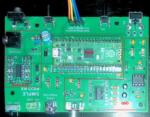
Technical
Posted: 01/29/2025
Comments: 0 |
Pico Rx performance - Excellent performance on 630m WSPR
The Simple Pico Rx is my minimalist implementation of Jonathan Dawson's "Pico Rx" at 101things: https://github.com/dawsonjon/PicoRX In this basic form the receiver consists of a Quadrature Sampling Detector (QSD aka Tayloe) and the Pico2 MCU which handles all DSP functions. There are NO front-end filters, the only bandwidth limitation comes from the tracking filter... READ MORE |
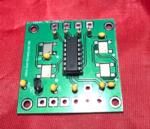
Crystal Replacement
Posted: 08/226/2024
Comments: 0 |
Making SMT "no lead" parts easier to use
SMT is the future - but how can we actually use parts without leads? ... READ MORE |
|
Crystal Replacement
Posted: 02/38/2024
Comments: 0 |
How good can a crummy receiver be?
Hundreds of different simple SDR receivers have been designed around Dan Tayloe's Quadrature Sampling Detector or QSD. Mine add nothing to the state of the art, and in fact subtract things, as I like minimalist solutions and the QSD is right in that sweet spot. Following the evolution of Tayloe's design I delete the resistors in series with the sample lines for inst... READ MORE |

Technical
Posted: 02/37/2024
Comments: 0 |
What's in a number (3253)?
The FST3253 dual four-to-one mux/demux IC has long been used as a "Tayloe Detector" or QSD (and QSE) in low-cost SDRs. They provide incredible performance for such a simple circuit, converting RF to baseband IQ with low loss and the ultimate in simplicity. Unfortunately the original FST3253 part has become obsolete and while substitutes are available, this is where the... READ MORE |

Vintage Ham Radio
Posted: 02/32/2024
Comments: 0 |
The Stancor 10P Transmitter
There weren't really many commercial transmitters in the 1930s as most hams built their own. But many of the ones that were offered came from the transformer companies who had two chances to profit. First, from those who would buy the kit, and two, from those would would see it in the (free) booklets the companies provided to their distributors who would then sell the iron to ham... READ MORE |

Vintage Ham Radio
Posted: 12/355/2023
Comments: 0 |
The Care and Feeding of the EF Johnson Courier amplifier
The EF Johnson "Courier" is a grid-driven amplifier using two 811A tubes. Switching is provided for operating in either class C for CW or as a class B linear amplifier for AM or SSB. Rated power is 500 watts input for CW, 500 watts PEP input for SSB, and 200 watts input for double-sideband AM with carrier. Since all amateur power levels were meas... READ MORE |

Historic
Posted: 11/329/2023
Comments: 0 |
TV Duplexer
Some things are interesting, even if totally useless nowadays. Such is the case with the Philco 426-3034 Crossover Kit for UHF TV. What the heck is that? Well, back in the late 50s, UHF television stations operating on channels 14-83 started to appear in many areas of the US where viewers had a VHF-only TV antenna, and in many cases an externa UHF converter was... READ MORE |

Crystal Replacement
Posted: 11/327/2023
Comments: 0 |
Replacing failed crystals
For decades, quartz crystals were used everywhere a stable frequency source was needed, even in some applications that depended on overtone (harmonic) behavior into the VHF range. These crystals were less stable and more dependent on circuit parameters that fundamental types and thus more problematic. Such was the case with the 94 MHz crystal in the 2 meter converter ... READ MORE |

Historic
Posted: 11/315/2023
Comments: 0 |
My Own Ham Radio Story by W9RAN
Everyone has a story of how they got involved in ham radio - this is mine. It started much earlier, including receiving a Knight Kit Span Master shortwave radio for Christmas in about 1963, at age 12. I'll never forget the night my dad and I finished building it and I wanted to try it out. It came with a 50 ft. antenna which was still coiled up - but ... READ MORE |

Technical
Posted: 09/267/2023
Comments: 0 |
Hot to simulate vacuum tubes in LTSpice
LTSice is a powerful simulation tool that is provided free by Linear Technology Corp. It comes with a complete library of passive and common analog solid-state components but if you want to use it to simulate vacuum tubes, it doesen't work as-is. Even though triode and pentode symbols can be found in the "Misc" folder, they are just schematic symbols and... READ MORE |
